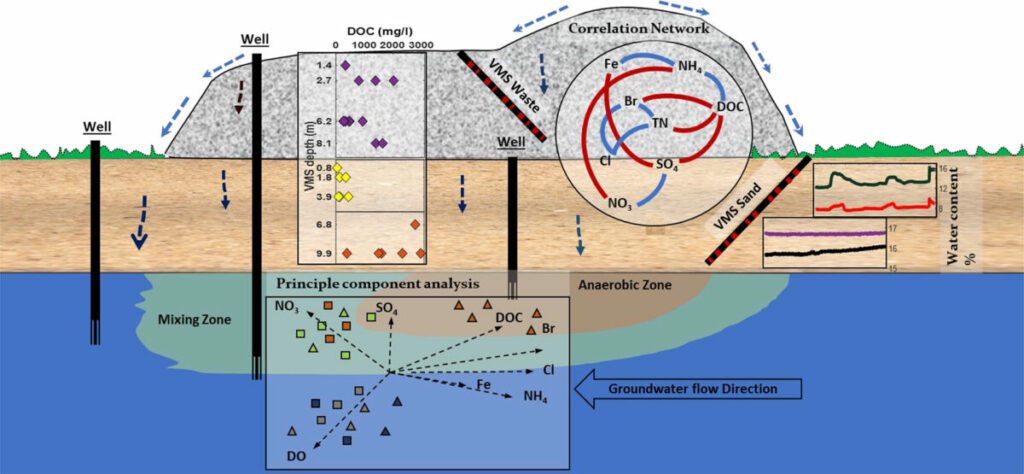Highlights
- Evaluating the environmental factors controlling landfill leachates contamination
- Synchronous monitoring of the waste body, unsaturated zone and groundwater
- Landfill morphology impact on rainwater percolation and leachate generation
- Diffusive aeriation affects biochemical transformations under the landfill margins
- Effect of percolation rates on leachates contaminants attenuation in groundwater
Abstract
Leachate contamination from uncontrolled landfills is a long-lasting environmental hazard that threatens groundwater resources worldwide. We developed a holistic site-characterization approach that incorporates leachate data from the waste body, unsaturated zone, and groundwater with information on landfill geomorphology and climatic conditions. An advanced vadose-zone monitoring system was used to characterize the percolation patterns and chemical properties of the leachates in the waste body and underlying unsaturated zone; a set of observation wells was used to characterize the contaminants’ distribution in the groundwater. Multivariate analysis of the chemical composition overcame multiparameter complexity, and pinpointed the dominant factors controlling contaminant migration dynamics. The landfill’s mound morphology, constructed with steep slopes, led to runoff generation, limited water infiltration through the waste, and enhanced infiltration of contaminated water at the landfill margins. Aerated conditions in the unsaturated zone under the margins induced leachate degradation and oxidation processes. The chemical composition of leachates under the center of the landfill remained typically anaerobic (high DOC, NH4+, Fe2+) despite the low water penetration. The limited water-percolation rates through the waste body and substantial mixing of the leachates with the oxidizing aquifer water led to almost complete degradation of the organic matter and significant nitrogen attenuation in the groundwater. Bromide release from decomposing waste served as an effective tracer for leachate distribution in the subsurface. The holistic approach implemented in this study provides robust and valuable insights into the factors that control landfill contamination potential and can be implemented in other sites with different climatic and geomorphological features.
Graphical Abstract
